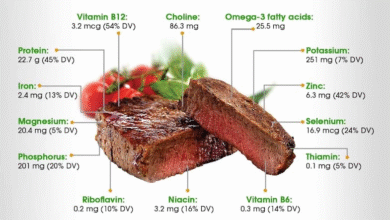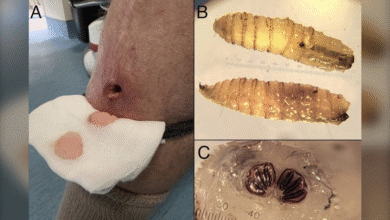Pharaoh’s Curse Fungus: A New Hope in Cancer Therapy

The pharaoh’s curse fungus, scientifically known as Aspergillus flavus, has garnered attention not only for its association with ancient tombs but also for its groundbreaking potential in cancer therapy. Recent studies from the University of Pennsylvania reveal that modified compounds derived from this fungal organism could revolutionize leukemia treatment and offer new avenues for cancer combat. Dr. Xue (Sherry) Gao, an associate professor, highlights the importance of discovering natural medicines that can emerge from fungi, reminiscent of how penicillin was born. By harnessing the unique properties of these fungal compounds, researchers are exploring effective strategies to curb the rampant growth of cancer cells. With the pharaoh’s curse fungus at the forefront of this research, the future of oncology may hold surprises as innovative therapies surface from the unlikeliest of places.
Known colloquially as the pharaoh’s curse fungus, Aspergillus flavus has a storied history intertwined with ancient Egypt and modern medicinal breakthroughs. This naturally occurring fungus, often found in decaying leaves and compost, has surprised scientists with its ability to produce potent compounds beneficial for cancer treatment. As ongoing research unfolds, its application in novel cancer therapies may indeed change how doctors approach diseases like leukemia. The peptides generated from this remarkable fungus could pave the way for innovative natural medicines that combat various forms of cancer. With the ongoing studies, the fungi’s role in developing new oncological treatments continues to emerge as a noteworthy area of exploration.
Unraveling the Pharaoh’s Curse Fungus
The term “pharaoh’s curse fungus” might evoke images of ancient Egyptian tombs and mysterious deaths, yet it refers to a fungus known scientifically as Aspergillus flavus. Found in decaying organic matter, this fungus has historically been linked to myths surrounding the curses of mummies, particularly after the discovery of King Tutankhamun’s tomb. However, recent studies have shifted focus from superstition to scientific exploration, revealing the potential of this fungus as a source of powerful medicinal compounds that could play a role in cancer therapy.
Dr. Xue (Sherry) Gao and her team at the University of Pennsylvania have demonstrated that Aspergillus flavus can be modified to produce compounds that have significant anti-cancer properties. These findings not only challenge the traditional narratives surrounding the fungus but also underscore the importance of natural medicines in developing therapies for conditions like leukemia. The duality of the pharaoh’s curse fungus—both a potential cause of morbidity and a source of healing—highlights the complexity and potential of nature in medicine.
The Cancer-Fighting Potential of Aspergillus flavus
Research into the cancer-fighting potential of the pharaoh’s curse fungus has opened new avenues in leukemia treatment. The study revealed that specific compounds, known as ribosomally synthesized and post-translationally modified peptides (RiPPs), found in Aspergillus flavus could effectively halt the growth of leukemia cells. These compounds interfere with critical cellular mechanisms, particularly microtubule formation, which is essential for cell division. This innovative approach showcases a promising direction in cancer therapy, setting the stage for further research into natural fungal compounds.
As Dr. Gao noted, fungi could hold the key to discovering new medicines, much like penicillin revolutionized antibacterial treatment in the past. The ability of these fungal compounds to target cancer cells presents an attractive alternative to conventional chemotherapy. As the findings suggest, the compounds developed from the pharaoh’s curse fungus are not only potent but also have mechanisms of action distinct from existing FDA-approved leukemia treatments, potentially leading to improved patient outcomes.
Historical Context of the Pharaoh’s Curse
The history of the so-called “pharaoh’s curse” underscores the enduring human fascination with the supernatural. Following the discovery of King Tutankhamun’s tomb in the 1920s, numerous deaths among the excavation team fueled rumors about a curse. Archaeologists and historians alike have speculated whether these tragic events were triggered by dormant fungal spores, particularly from Aspergillus flavus, present in permeable ancient materials. This connection between a simple fungus and the catastrophic consequences of its spores serves as an intriguing intersection of myth and science.
This historical narrative sheds light on the importance of microbes in our environment and their potential impact on human health. Just as the curse was believed to signal misfortune, modern research establishes that the same organisms can offer life-saving treatments. The evolution of understanding surrounding the pharaoh’s curse fungus illustrates how antiquated beliefs can sometimes lay the groundwork for groundbreaking scientific inquiry.
Advancements in Fungal Medicine
The advancements in fungal medicine, particularly those involving compounds derived from Aspergillus flavus, emphasize the need for ongoing research in natural products. In the fight against cancer, these naturally occurring substances may offer unique biochemical properties that can be harnessed for therapeutic benefits. As the study indicates, the compounds derived from the pharaoh’s curse fungus could lead to new treatment options that leverage the distinct properties of fungal metabolites.
With the increasing prevalence of treatment-resistant forms of leukemia, the search for alternative therapies is more critical than ever. The discovery of effective agents from natural sources such as fungi not only provides new avenues for treatment but also encourages further exploration into the vast pharmacological potential of unexplored organisms. If ongoing research continues to yield favorable results, the advancements could redefine the role of fungal compounds in medical therapies.
Limitations of Current Research
While the promise of the pharaoh’s curse fungus in cancer therapy is significant, it is important to acknowledge the limitations present in current research. The findings from the University of Pennsylvania study, while encouraging, are based on cell culture experiments that have yet to translate into in vivo or clinical outcomes. As noted by medical oncologist Dr. Tiffany Troso-Sandoval, the complexities of human diseases, particularly various subtypes of leukemia, raise questions about the generalizability of these findings outside laboratory settings.
Furthermore, the research indicated that the compound derived from Aspergillus flavus showed little efficacy against common cancers such as breast, liver, or lung cancers. This specificity suggests that while the fungus could become a potent tool against certain types of leukemia, its applicability in broad-spectrum cancer therapy might be limited. Future studies must prioritize understanding the full range of effects these compounds may have on different cancer types, emphasizing the importance of continued exploration and validation.
Natural Medicines: A Promising Frontier
The exploration of natural medicines, particularly those derived from fungi like Aspergillus flavus, represents a promising frontier in contemporary healthcare. Historically, medicinal compounds isolated from plants and fungi have significantly contributed to the development of effective treatments across various medical disciplines. The potential that pharaoh’s curse fungus holds in producing new compounds for cancer therapy reinforces the value of natural products in modern medicine.
As researchers continue to optimize these fungal compounds, there is hope that they will yield effective strategies for managing complex diseases such as leukemia. The intersection of traditional knowledge and modern scientific inquiry could uncover vast reservoirs of medicinal resources that remain untapped. Embracing natural medicines could not only enhance existing treatment modalities but also inspire innovations within the pharmaceutical industry.
Insights from Nature’s Pharmacy
Understanding the biochemical mechanisms within organisms like the pharaoh’s curse fungus paves the way for discovering novel therapeutic agents. Scientists are increasingly turning to nature as a source of inspiration, realizing that many effective medicines have origins rooted in the natural world. By studying the compounds produced by Aspergillus flavus, researchers aim to unlock new mechanisms for tackling diseases, providing a roadmap for innovation in oncology.
Nature’s pharmacy, exemplified by the diverse compounds in fungi, underscores the potential for developing targeted therapies that could complement or enhance existing treatment options. By exploring how these natural products interact with biological systems, there is the potential to create more effective and personalized cancer therapies, particularly as we tailor treatment toward specific cellular characteristics of different cancer types.
Future Prospects for Pharaonic Compounds in Oncology
The future of pharaonic compounds in oncology looks promising, particularly as research moves towards animal models and eventual human trials. This critical next phase will determine the viability and effectiveness of medications derived from the pharaoh’s curse fungus. The excitement within the scientific community, as expressed by Dr. Gao, hints at the potential breakthroughs that could emerge from these natural compounds.
By combining historical insights with modern scientific experimentation, researchers can create a multi-faceted approach toward understanding and utilizing Aspergillus flavus for therapeutic purposes. The ambition to harness fungal compounds as part of the arsenal against leukemia—and perhaps even other cancer types—could revolutionize standard care practices and fundamentally shift how we approach treatment in oncology.
From Myths to Medical Discoveries: The Legacy of Fungi
The journey from myths, such as those surrounding the pharaoh’s curse, to medical discoveries reflects humanity’s evolving understanding of disease and health. As stories of supernatural curses fade, scientific exploration shines a light on the relevance of fungi like Aspergillus flavus in contemporary medicine. These discoveries prioritize evidence-based approaches over folklore, revealing deeper truths about the organisms that share our environment.
The legacy of fungi in medicine is far from over, as ongoing research continues to uncover their vast potential. By reevaluating historical contexts and investigating the practical implications of natural products, we can transcend over-simplified narratives and embrace a future where these ancient organisms contribute profoundly to human health.
Frequently Asked Questions
What is the pharaoh’s curse fungus and its scientific name?
The pharaoh’s curse fungus, scientifically known as Aspergillus flavus, is a type of fungus associated with both historical and medical significance. Recent research suggests that this fungus could play a vital role in cancer therapy, specifically in treating leukemia.
How does Aspergillus flavus relate to cancer therapy?
Aspergillus flavus, known as the pharaoh’s curse fungus, has been found to produce compounds that may inhibit the growth of cancer cells. These compounds could potentially be developed into new treatments for leukemia, providing an innovative approach to cancer therapy.
Can pharaoh’s curse fungus be used in natural medicines?
Yes, pharaoh’s curse fungus (Aspergillus flavus) is being explored for its potential in natural medicines. Researchers are investigating its ability to yield compounds that may be effective against certain types of cancer, including in leukemia treatment.
What are the implications of pharaoh’s curse fungus in leukemia treatment?
The implications of pharaoh’s curse fungus in leukemia treatment are promising. Studies have indicated that compounds derived from Aspergillus flavus can block cell division in cancer cells, which may lead to new forms of cancer therapy.
Why is the pharaoh’s curse fungus associated with King Tut’s tomb?
The pharaoh’s curse fungus gained notoriety due to its association with King Tut’s tomb, where archaeologists and team members reportedly suffered mysterious deaths. Investigations later revealed the presence of Aspergillus flavus spores in the tomb, linking it to these historic events.
What are the health risks associated with pharaoh’s curse fungus?
While pharaoh’s curse fungus (Aspergillus flavus) is generally harmless to healthy individuals, it can pose serious health risks, particularly to those with weakened immune systems. Complications can include respiratory issues and potentially life-threatening infections.
What future research is being done on pharaoh’s curse fungus for cancer treatment?
Future research on pharaoh’s curse fungus involves testing its compounds in animal models and ultimately human trials. Scientists are excited about the potential of Aspergillus flavus in developing effective cancer therapies, particularly for leukemia.
What types of cancer cells does the pharaoh’s curse fungus affect?
Research indicates that the compounds from pharaoh’s curse fungus (Aspergillus flavus) specifically target leukemia cells, showing little to no effect on other cancer types such as breast, liver, or lung cancers, highlighting the need for targeted treatment approaches.
What makes the compounds from pharaoh’s curse fungus unique in cancer treatment?
The compounds sourced from pharaoh’s curse fungus (Aspergillus flavus) are unique due to their ability to block the formation of microtubules, which are essential for cell division. This mechanism may provide a distinctive method of combating certain cancer therapies.
How widespread is Aspergillus flavus in nature?
Aspergillus flavus, or pharaoh’s curse fungus, is widely found in nature, often occurring in decaying leaves, compost, trees, plants, and various crops, making it a common fungus in many ecological environments.
| Key Point | Details | |
|---|---|---|
| Fungus Name | Aspergillus flavus | |
| Cancer Research | Modified to enhance cancer-killing properties. | |
| Historical Context | Linked to deaths after opening King Tut’s tomb; speculated fungal spores caused infections. | |
| Cancer-fighting Potential | Compounds may block cancer cell growth by disrupting microtubule formation. | |
| Limitations of Study | Early stage; limited effectiveness on certain cancers; more research needed. | |
| Future Plans | Testing in animal models and eventually human trials. | |
Summary
Pharaoh’s curse fungus, also known as Aspergillus flavus, has shown promising potential as a novel approach in cancer treatment, particularly for leukemia. Recent studies indicate that compounds derived from this fungus can inhibit cancer cell growth by blocking vital processes essential for their division. While the historical context surrounding the fungus adds an air of intrigue, the focus remains on its medical benefits. Future research is set to explore its efficacy in animal models, paving the way for potential human trials.




